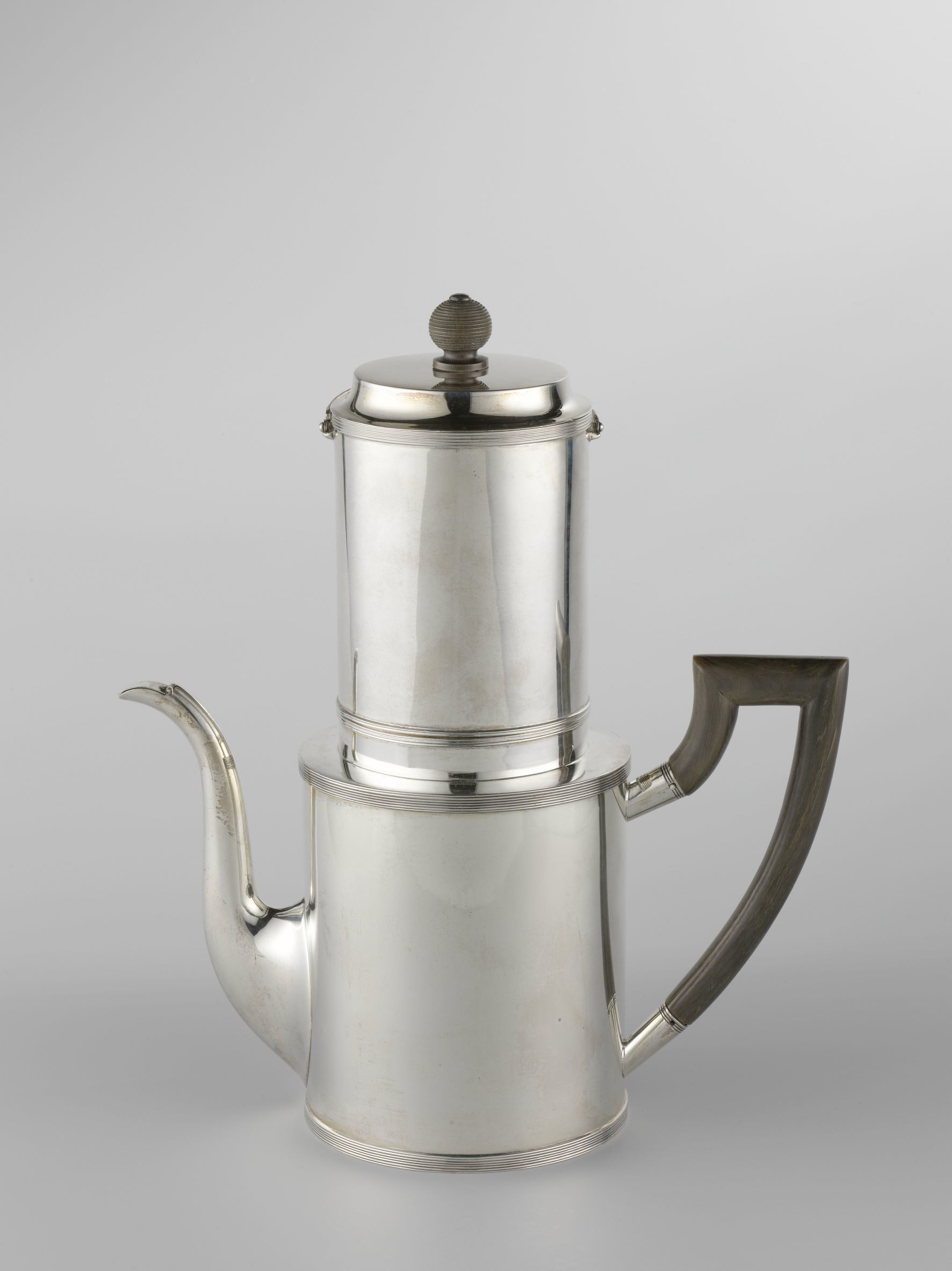Sanne Aletta van Otten – Coffee Reading
Eighteen young authors have brought nineteenth-century artefacts from the Rijksmuseum to life. They have taken inspiration from the question: what do you see when you look at these objects with an eye for invisible labour? Sanne Aletta van Otten voices a drip-filter coffee pot from 1816, manufactured by the Diemont company. ‘The china told me to be under no illusions.’
 Drip-filter coffee pot, Diemont, 1816
Drip-filter coffee pot, Diemont, 1816© Rijksmuseum Collection, Amsterdam
Coffee reading
Do come a little closer. And place your hand on the glass.
Shall I predict your future?
Oh yes, I can do that.
Are you surprised?
I learned the art of tasseography from an old cook who’d read the servants’ cups late at night. I instantly knew it was for me. But nobody believed in me.
The china told me to be under no illusions; a simple coffee pot like me would never be able to learn something so complicated. The crystal glass thought coffee reading was something for second-rate fake copper pots.
The silver told me to shut up.
But I thought to myself, what have I got to lose? I was bored rigid in the salon, among all those ladies in pretty frocks.
I worked hard. When I was on the table I’d closely study the patterns in the used cups. I’d follow all the conversations to know how the people who’d visited were faring.
So, step by step, I learned what coffee grounds reveal about the world.
The first time I put my knowledge into practice I dropped a real clanger. I predicted that one of my owner’s second cousins would be having a baby soon, but I got my cups mixed up. Less than a month later, we heard that she’d been diagnosed with hysteria and taken to an asylum. As you can imagine, the china laughed hard about it. The silver was furious; I’d not only made a fool of myself, but of all the others in the silver cabinet.
It wasn’t until I made three correct predictions in a row that the service began to have faith in me. And when against all expectations I predicted that the new housemaid, who’d been caught with the stable boy, would be allowed to stay, I was officially recognised as a clairvoyant.
It was a wonderful time. I was given pride of place in the silver cabinet. When we were polished, the other silver items made sure I was done first. And when I was filled up, the water in the kettle would dawdle, so I could tell the kitchen furniture what the future had in store. For a short while I was the most important artefact in the household.
Until, one dark morning, I predicted that some of the china would accidentally be knocked off the table by Mr Verbleek. The service blamed me and forbade me to ever make a prediction again.
When I foresaw that all the silver would be donated to this museum, I kept quiet, but as always when I saw something dreadful, I turned dark with sorrow. The silver exclaimed that it was black magic. The housemaid was scolded.
Despite the ban imposed by the other pieces, I’m still involved in fortune-telling.
It’s my calling. The cleaners in the museum here taught me that there are ways of predicting the future without coffee grounds.
Do come a little closer, so I can get a better look at your hand.
What do you say, shall I predict your future?












